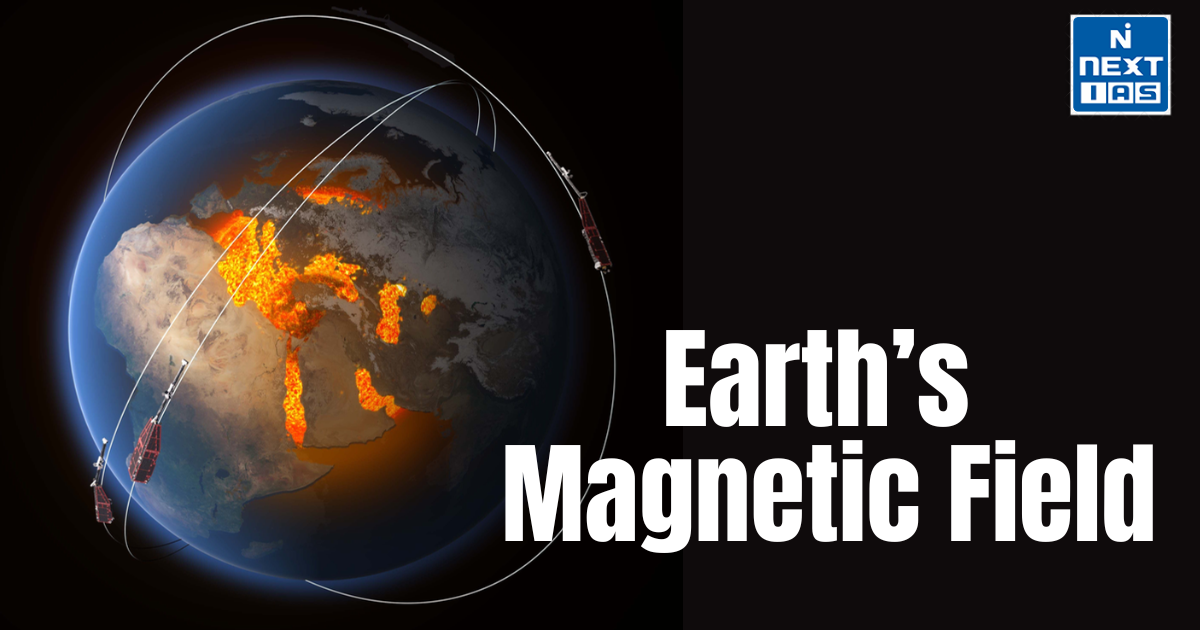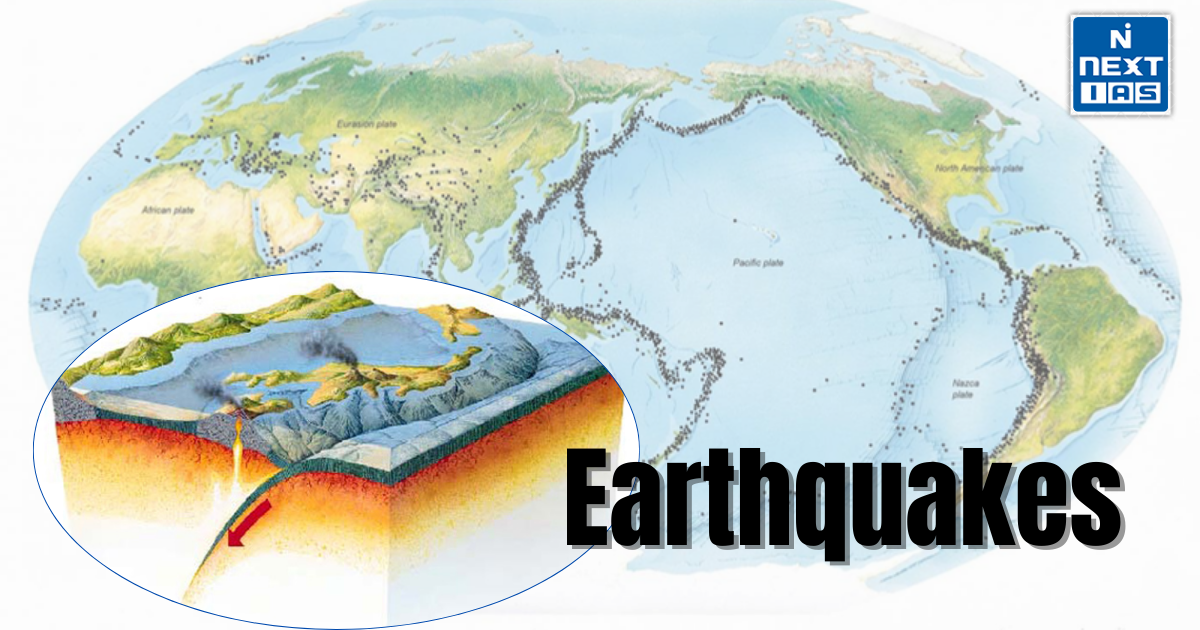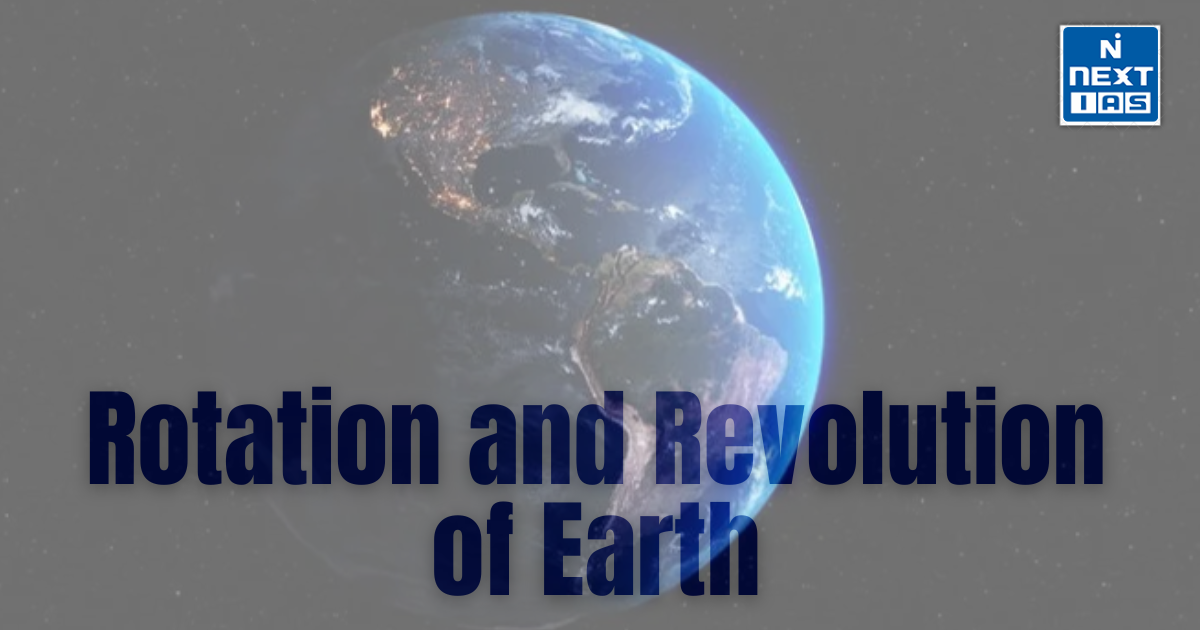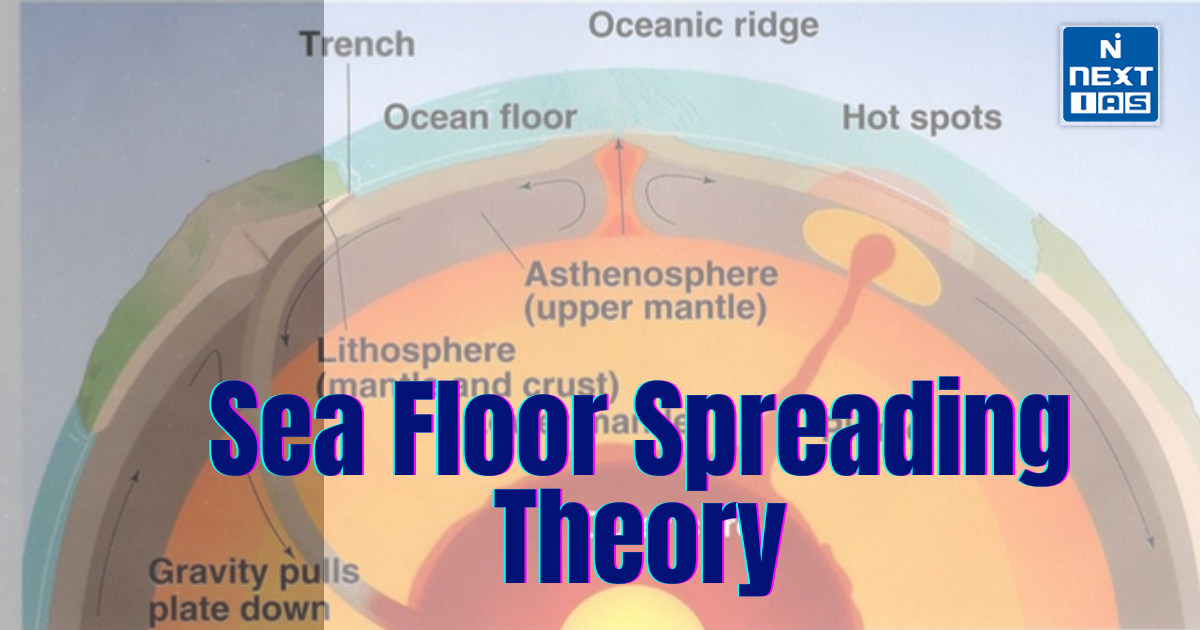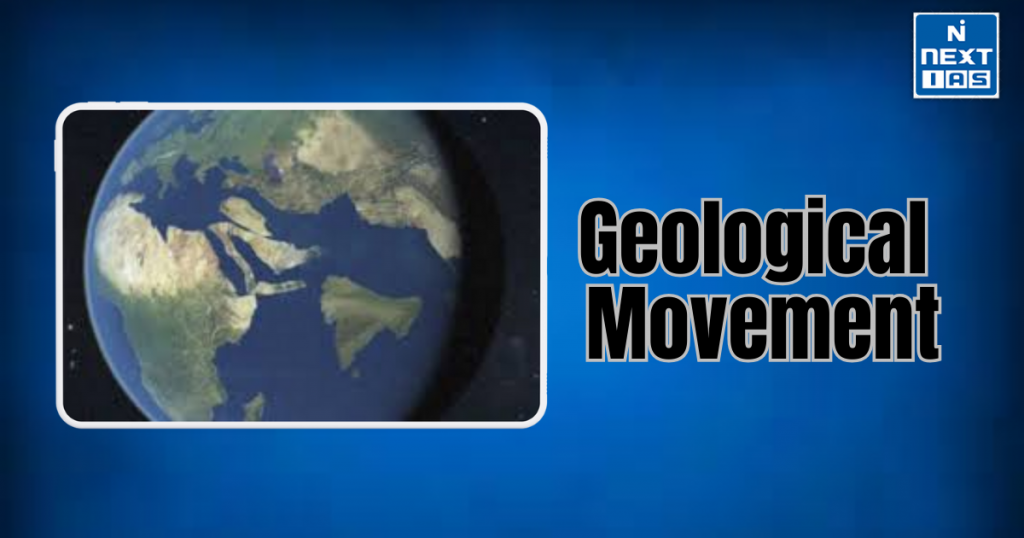
Geological movement refers to the dynamic processes that shape the Earth’s surface, driven by forces within the planet. These movements include tectonic plate shifts, volcanic activity, earthquakes, and erosion, all of which contribute to the continuous transformation of landscapes over time, influencing Earth’s geology and environment.
About the Geological Movement
- Geological movement encompasses the processes that constantly shape and reshape Earth’s surface, driven by the dynamic forces within the planet.
- These movements are primarily caused by the internal heat of the Earth, which leads to the movement of tectonic plates, volcanic activity, and seismic events.
- The most significant geological movements occur at the tectonic plate boundaries: divergent, convergent, and transform.
- At divergent boundaries, plates move apart, creating new crust through processes like seafloor spreading. At convergent boundaries, plates collide, leading to the formation of mountains, ocean trenches, and volcanic arcs. Transform boundaries involve plates sliding past one another, causing earthquakes.
- Other geological movements include erosion, where wind, water, and ice wear down rocks, and uplift, where the Earth’s crust is raised due to tectonic forces. These movements are responsible for the ongoing transformation of Earth’s surface, affecting landscapes, ecosystems, and human activities over geological time scales.
Classification of Geological Movements
Geological movements are the processes that shape the Earth’s surface, driven by forces within the planet. These movements can be classified based on their nature and the type of forces involved. The primary classifications are:
Tectonic Movements
Tectonic movements are caused by the motion of the Earth’s lithospheric plates, which are driven by forces like mantle convection and gravity. These movements are responsible for the formation of most geological features.
- Endogenous Movements: Movements originating from within the Earth.
- Diastrophism: Slow, large-scale movements of Earth’s crust that can result in the formation of mountains, valleys, and other landforms.
- Orogenic Movements: Tectonic forces that lead to the formation of mountain ranges through the collision and folding of plates (e.g., the Himalayas).
- Epeirogenic Movements: Vertical movements of the Earth’s crust, such as uplift or subsidence, which affect large, relatively flat areas (e.g., the Great Basin in the United States).
- Volcanic Movements: Movement caused by the eruption of molten rock (magma) from beneath the Earth’s surface. These movements create volcanic landforms like lava flows, craters, and calderas.
- Seismic Movements: Movements that result from the sudden release of energy within the Earth’s crust, causing earthquakes and the formation of faults and fissures.
- Diastrophism: Slow, large-scale movements of Earth’s crust that can result in the formation of mountains, valleys, and other landforms.
Exogenous Movements
Exogenous movements are caused by external forces, such as weathering, erosion, and sediment deposition. These movements generally occur at or near Earth’s surface and are responsible for the shaping of landscapes.
- Weathering: The breakdown of rocks and minerals due to physical, chemical, or biological processes.
- Physical Weathering: The mechanical breakdown of rocks into smaller pieces, such as through freeze-thaw cycles or thermal expansion.
- Chemical Weathering: The breakdown of minerals through chemical reactions, such as the dissolution of limestone by acid rain.
- Biological Weathering: The breakdown of rocks due to biological activity, such as plant roots growing into cracks.
- Erosion: The process by which weathered material is transported by agents like water, wind, or ice.
- Water Erosion: The movement of sediments through rivers, streams, and oceans.
- Wind Erosion: The transportation of sand and dust by wind, often forming dunes.
- Glacial Erosion: The movement of rock and debris by glaciers, which carve valleys and shape landscapes.
- Sedimentation: The deposition of eroded materials into new locations, leading to the formation of sedimentary rocks, deltas, and coastal landforms.
Isostatic Movements
Isostatic movements occur due to the Earth’s crust adjusting to changes in load or pressure. These movements are slow but contribute significantly to landscape changes over time.
- Isostatic Uplift: The rise of the Earth’s crust due to the melting of glaciers or the removal of heavy loads, such as the rising of land after the retreat of ice sheets during the ice age.
- Isostatic Subsidence: The sinking of the Earth’s crust due to the addition of heavy loads, such as when large ice sheets or sediments accumulate.
Oceanic Movements
Oceanic movements refer to processes that affect the ocean’s surface and the seafloor. While not directly a part of the Earth’s solid crust, they have a significant impact on geological processes.
- Tidal Movements: The periodic rise and fall of sea levels caused by the gravitational pull of the Moon and the Sun, which can shape coastal features.
- Currents and Waves: Ocean currents and waves also contribute to coastal erosion, sediment transport, and the formation of landforms like beaches and estuaries.
Gravitational Movements
Gravitational movements occur when rocks, soil, and other materials move under the influence of gravity. These movements can cause landslides and mass wasting.
- Landslides: The rapid downward movement of rock and soil, often triggered by earthquakes, volcanic activity, or heavy rainfall.
- Rockfalls and Slumps: Slower forms of gravitational movement that can shape valleys and slopes.
Geological movements can be broadly categorized into tectonic, exogenous, isostatic, oceanic, and gravitational movements. These processes are responsible for the creation, destruction, and alteration of Earth’s surface features, shaping landscapes over millions of years.
Significance of Geological Movements
Geological movements play a crucial role in shaping Earth’s surface and influencing the planet’s physical, ecological, and environmental characteristics. Here are some key aspects of their significance:
Formation of Landforms and Geological Features
Geological movements, particularly tectonic forces, are responsible for the creation of many of Earth’s landforms and geological features:
- Mountain Ranges: Orogenic movements (tectonic plate collisions) create mountain ranges such as the Himalayas and the Andes.
- Ocean Basins and Trenches: Subduction zones and seafloor spreading create deep ocean trenches like the Mariana Trench and the formation of new oceanic crust along mid-ocean ridges.
- Volcanoes and Earthquakes: Volcanic movements and seismic activity lead to the formation of volcanoes, lava flows, and faults, impacting both landscapes and human settlements.
Earth’s Dynamic Nature
Geological movements demonstrate that Earth’s surface is not static. These movements constantly reshape the landscape through:
- Plate Tectonics: The movement of tectonic plates leads to the continual formation and destruction of crust, recycling Earth’s surface over millions of years.
- Erosion and Sedimentation: Exogenous movements like erosion and sedimentation slowly wear down mountains and valleys, redistributing materials across the planet.
- Isostatic Adjustments: Isostatic movements reveal how the Earth’s crust adjusts to loading or unloading, such as post-glacial uplift or sinking due to the accumulation of sediments.
Impact on Climate and Weathering
The movements of tectonic plates influence Earth’s climate patterns and contribute to weathering:
- Mountain Building and Climate: The rise of mountains, such as the Himalayas, can alter weather patterns and create rain shadows, which affect regional climates.
- Volcanic Activity: Volcanic eruptions can influence the atmosphere, temporarily cooling the Earth by releasing ash and gases that block sunlight.
Earthquakes and Natural Disasters
Seismic movements cause earthquakes, which can have significant social and environmental impacts:
- Earthquakes reshape landscapes, trigger landslides, and cause damage to infrastructure, leading to loss of life and property.
- Tsunamis triggered by undersea earthquakes can cause widespread destruction in coastal areas.
Resource Distribution and Exploration
Geological movements are responsible for the distribution of important natural resources:
- Mineral Deposits: Tectonic processes like subduction and continental collision concentrate valuable minerals and metals, such as gold, silver, and copper.
- Oil and Gas: Oil and gas deposits often accumulate in sedimentary basins formed through tectonic movements and erosion.
- Geothermal Energy: Volcanic activity and plate movements create geothermal energy sources, which can be harnessed for sustainable energy production.
Evolution of Life on Earth
Geological movements have influenced the evolution of life:
- The movement of tectonic plates and the shifting of continents have impacted species distribution and contributed to the isolation of populations, leading to speciation.
- The formation of barriers such as mountain ranges or oceans due to tectonic movements has led to the evolution of distinct ecosystems in different regions.
Long-Term Environmental Changes
Over geological time scales, these movements contribute to long-term environmental changes:
- The opening and closing of oceans, the formation and destruction of mountain ranges, and the changing positions of continents influence Earth’s climate and ecosystems, driving long-term changes such as ice ages and global warming cycles.
Human Influence and Adaptation
Geological movements have greatly influenced human settlement patterns and civilization development:
- Ancient and modern civilizations often settled near tectonically active areas where fertile soil, minerals, and water sources were available (e.g., near volcanic regions).
- However, these areas are also prone to natural hazards like earthquakes, volcanic eruptions, and landslides, influencing building techniques and disaster preparedness.
Hazard Mitigation and Understanding
The study of geological movements is vital for understanding and mitigating natural hazards:
- By understanding the causes of seismic activity, volcanic eruptions, and landslides, scientists can predict and mitigate their impacts, saving lives and reducing economic losses.
- Seismology and volcanology help improve early warning systems for earthquakes and volcanic eruptions.
Geological History and Earth’s Past
Geological movements help scientists reconstruct the history of Earth:
- Studying the movement of tectonic plates and the resulting landforms provides insights into the planet’s past climates, geological events, and biological evolution.
- Fossil distribution and the arrangement of continents are evidence of past geological movements, which help scientists understand Earth’s evolving conditions.
Geological movements are central to understanding Earth’s dynamic nature, natural resource distribution, climate patterns, and biological evolution. These processes continuously shape the planet’s surface, influence human societies, and provide crucial information about Earth’s geological history.
Way forward
The way forward for studying geological movements involves advancing technologies like seismic monitoring, satellite imaging, and 3D modeling to improve disaster prediction and resource management. Enhanced research into plate tectonics, volcanic activity, and earthquakes will also help mitigate natural hazards and provide insights into Earth’s evolving geological processes.
Conclusion
Geological movements are fundamental in shaping Earth’s surface and influencing its environment. From the formation of mountains and earthquakes to the distribution of natural resources, these movements drive dynamic changes over time. Understanding them is essential for comprehending Earth’s history, natural hazards, and the evolution of life.
GS - 3
